The 50 States Project is a series of candid conversations with interior designers across the country about how they’ve built their businesses. This week, Charleston, South Carolina–based designer Betsy Berry tells us how working for blue chip New York design firms taught her to pursue perfection, why she created an annual retreat for her staff, and how she’s finding new ways to get project timelines right.
What drew you to the design industry?
I studied fashion design as an undergrad, and interned in Italy while I was studying abroad. While I was there, I realized that the fashion industry—the pace of it, the energy of it—is not lasting. I really felt, “This is wrong. I want something more permanent.” That’s when I decided to do interiors. My dad [made me] finish my fashion major, so [after graduating] I went to school at the New York School of Interior Design. I stayed in New York for a long time and got to work for some really great people: Stephen Sills and David Easton.
Did you always know that you wanted to start your own business?
That whole time, I think I was subconsciously trying to learn as much as I could, whether I knew I was going to start my own business or not. Looking back, I realize now that I was always very much observing from that angle—not just learning the trade, but also watching the business management and trying to understand how different principals ran their businesses. When we moved to Charleston about 10 years ago, I just knew that that’s what I wanted to do.
What took you to Charleston?
My husband is a chef, and he was offered a job there. And I’m originally from South Carolina, and I wanted to come back to the South to be closer to my family, so the move was personal and professional.
How did you go about launching the business?
I designed my husband’s restaurant—it has since closed—and then people started coming to me to do restaurants. But I came from doing high-end residential with David Easton, so restaurants were totally out of my wheelhouse. I was teaching myself a whole different aspect of the industry.
I would imagine all of the resources are different.
And the budgets! I was used to working on $40 million projects, so it was a huge learning curve for me.
Your portfolio today reads very residential. Did you know that you wanted to move back into that world?
It’s like reading fiction versus nonfiction. I’m really glad that I did [restaurants] and got that knowledge, but in doing them, you learn it’s a very niche thing. It’s less personal, less emotional—it’s a business, it’s a bottom line. It’s a totally different energy than when you’re working with the clients. And I have found that I just really love residential design for that reason: I love getting to know the families and how they live. That is what makes it all worth it.

Did you have to intentionally shift your practice away from the restaurant work?
I did. I felt very intimidated moving here—I didn’t really know anybody, and I thought, “How is anyone ever going to find me?” And of course, it just happened organically. I met with an architect here who I love, and after meeting with him, he said, “I want you to meet these clients. I think you’re right for this house.” And that was my big break for residential.
I was pregnant with my second when I interviewed for that job—very pregnant—and I thought, “Oh, God, are they going to hire me?” But they took a leap of faith. That was seven years ago.
How did that project unfold, and what did it change for you?
Number one, the property itself is one of the most gorgeous houses I’ve ever seen. It was built in the 1780s, and it’s 9,800 square feet—the only thing that was added was a very small powder room and mudroom, and everything else was original to the home. That’s what I nerd out over, and to work on that every day was very cool. Then you add in the clients, who had just moved here from Connecticut—they are lovely and very dear friends now. There is a certain type of person who buys a house like that one in Charleston, and they are stewards of these houses. They’re investing in keeping that house alive. So right out of the gate, we were already on the same page.
When I present, I usually show 80 percent of the house at one time. I really dive in and imagine the whole house, and I present one big picture. And as the client started to trust me, she pushed me too. She’s more colorful than I am—I always joke that my closet is black, white, navy and camel, but hers is so colorful. So it was very collaborative, and it took a little over two years to complete. That project was published in The New York Times.
How did that change things for you?
Well, I got a really great client from it—she read that article, then called me, and she was lovely as well. We just installed that project three months ago. I always say that about PR and publishing and marketing: If you get one client, you win.
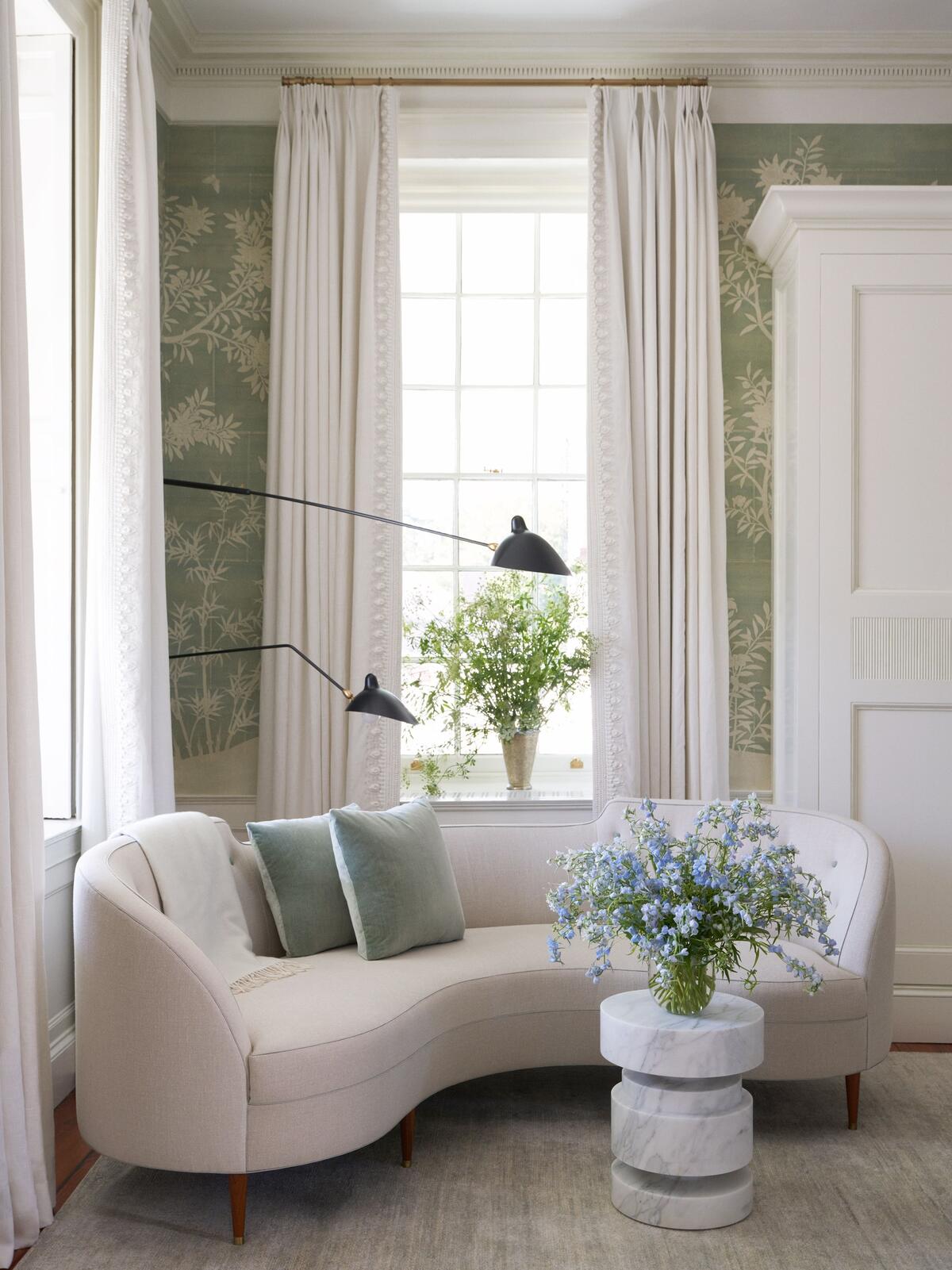
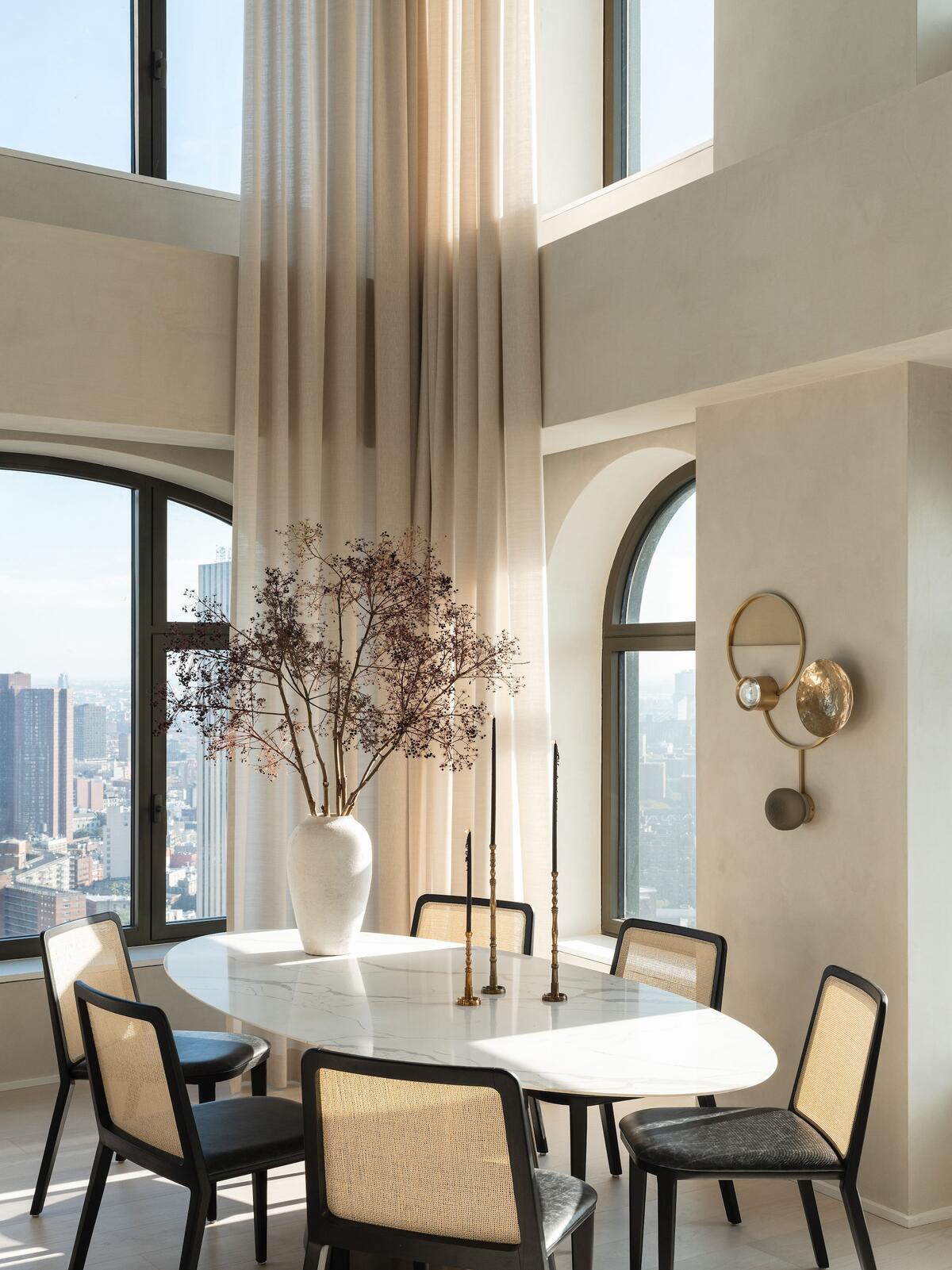
What does the business look like today?
During that first project, there were two of us. Now there are nine of us working on 12 to 15 projects. I am the creative director—I still choose everything—and then I have three teams that work with me daily on making the project happen, and then accounting.
Who’s on those teams, and what are their roles?
It’s a two-person team: a lead project manager/designer and an assistant.
You worked at storied firms in New York. How did the office environments there shape what you wanted to create as your business grew?
I started working for Sills Huniford as Ford [James Huniford] and Stephen were going through a breakup professionally and personally. We didn’t really know about the professional part [at the time], but the energy was intense—or maybe it was just a New York thing, but we’d work until 10 o’clock at night and we did not care. That was the expectation. And it was told to us: If you don’t want to work here, you don’t have to, because there are 30 girls behind you. It was a different time. But witnessing Stephen’s artistic ability was incredible—he had something innate in him. He would mix paint on-site. He very much cared about what he was doing. Absorbing all of that was a big lesson—and just the art that I saw, and the true antiques.
I was there for about a year, then I moved to David’s office, and the intensity was gone. When you got off the elevator and stepped into the office, the lobby was set up like a living room, and I just thought it was so beautiful. A lot of people had worked there for 10 years or more, and they were like a family—the energy was completely different. And there were no mistakes, because nothing was rushed. We sometimes worked on projects for five years.
Wow, OK. What was driving those timelines?
Just in terms of scale and construction, your timelines were long—the largest home I worked on was 27,000 square feet. Working for the top 1 percent really wasn’t a monetary lesson; it was more that when you can have whatever you want, we’re going to provide perfection and take our time. That means that things are not just double-checked—they are checked consistently throughout the entire life of the project.
My mentor, who I worked for there, would take me everywhere: I shadowed him to custom vendors, antique shops, wherever. And he would test me. He would say things like, “Do you think this is real? Do you think this has been fabricated in X amount of years?” He really taught me, instead of just saying, “Do this, order this.” There was an investment of time. That really affected me, and that personal relationship and education is why I am able to do what I’m doing now, so that’s what I try to do with my firm.
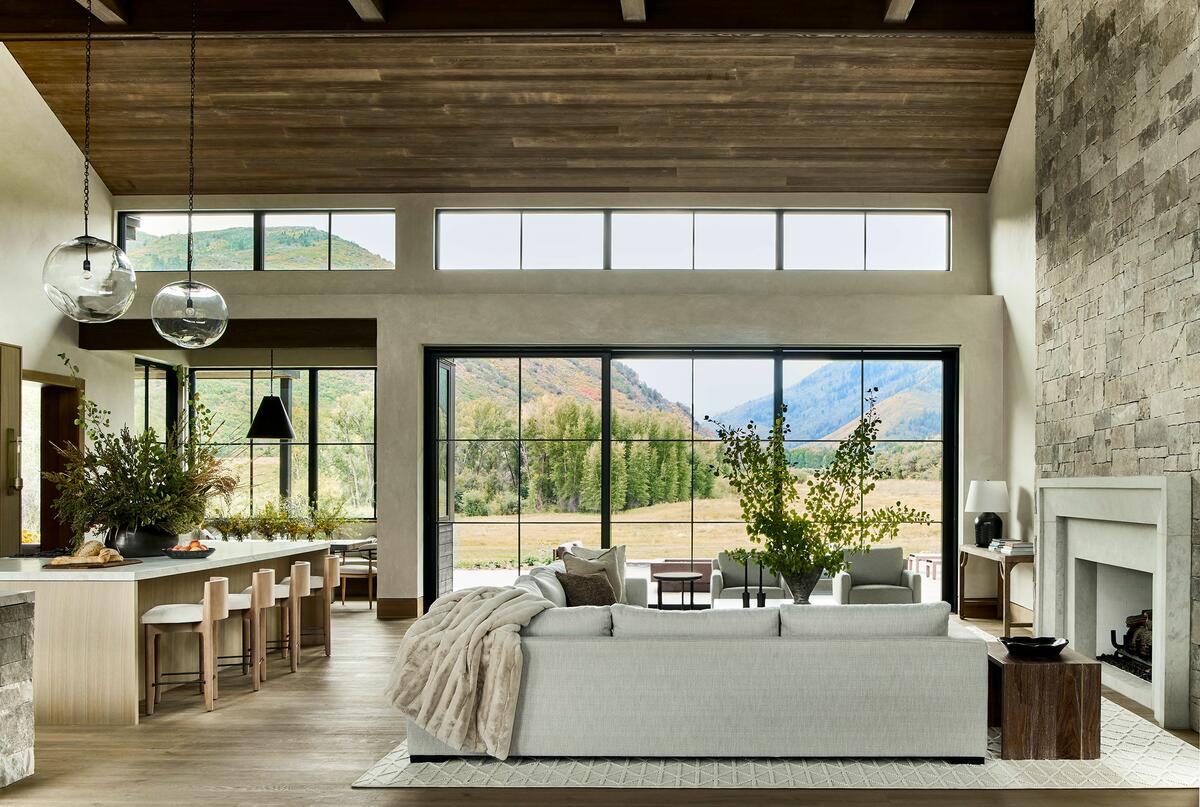
How did you start to put that into practice?
These were very well-known firms, but they weren’t actually that large. I never came from a corporate environment, ever, but it was fun. It was such a joy to work at those offices when I was in my 20s. I want my team to feel very comfortable here and enjoy what they do too. As I’ve gotten older, I realized how rare it is in life to really love what you do every day, and I try not to take that for granted. It’s so cool to have this creative energy in a space where everyone gets along, and I’m very proud of that.
A few years ago, I had a friend come in and help me with operations, and she was like, “You don’t do reviews?” And I was like, “I’ve never even had one.” She told me, “You have to do this.” So I decided we would have annual retreats. And then I was like, “What are we going to do on it?” It really pushed me. I now have a manual for the firm, and we have all of our processes and procedures written down—down to what font you use on your budget, how sales tax works, and how emails are written. What is the voice we use? What is our client experience?
When I was preparing for it this year, I was joking with my husband that I feel like I’m going back to college. It’s not a part of my brain that I’m using daily—I have to think about the business in a much more abstract way. But in doing that, I realize now that [those efforts] have really helped streamline [our operations]. And I think that helps the staff too. The fewer questions they have, the more secure they feel.
That’s so powerful. I’ve heard principals talk about that manual as saving them time because there are fewer questions. But for you to focus on making your team feel secure in their roles feels so important to talk about.
I think about the hesitancy that I see in my younger staff, where maybe they’re nervous to ask me something. I asked myself: Where is that coming from? And maybe it’s because I told them [the answer they’re looking for] once, and [they would be better served] if there was something they could refer to [on their own].
And if they looked it up and still have a question, they can feel more confident asking.
Yes! It’s about building confidence. The first couple years we did the retreat, [there was a lot to get through]. I remember one year we talked about budgets for two hours: what to include, what not to include, what’s client-facing and what’s not, how detailed to get, how often to issue them. It was pretty amazing to sit down and go, “Yes, we do this every day, but let’s all talk about the best way we think we all do it as a team, and then we’re going to write it down.” It creates a grounding force for everyone.
In our retreat this year, we ran through our processes quickly. It was like, “OK, we’ve all got this. Now, let’s move on.” All of those things we’ve developed in the past now feel secure, so we can dive deeper. My additions this year are financial goals and [a focus on] client experience.
What were those conversations like?
When we present, what exactly do we do? What type of card are we using? Are you using a label maker? What’s the font?
I went to a Design Leadership Network presentation on client experience in Ojai, California, and my epiphany was that aesthetics are important at every step of what we’re doing. Essentially, we were looking at the science and sociology of: What do people remember? And what they remember are highs and lows.
One of the takeaways was that clients could even be more loyal if, when you make a mistake—just like anybody in life, friendships, parenthood, whatever—you say, “I messed up, and I’m going to fix it.” And then it’s how you fix it. And so with my team, we went through that whole process. What do we do for the client if a mistake is made? How is that handled?
This is a service industry. Designers forget that, right? At the end of the day, we have to ask ourselves: How do we want our clients to feel? If we want them to feel special, how do we do that? That’s also what I was talking about with my employees. For example, let’s say we get a sketch of Gracie wallpaper and we get excited about it. Well, we should share that with our client—send them a note and say, “Look how excited we are!” It’s those small touches throughout the process [that are most memorable], not just the checklist.
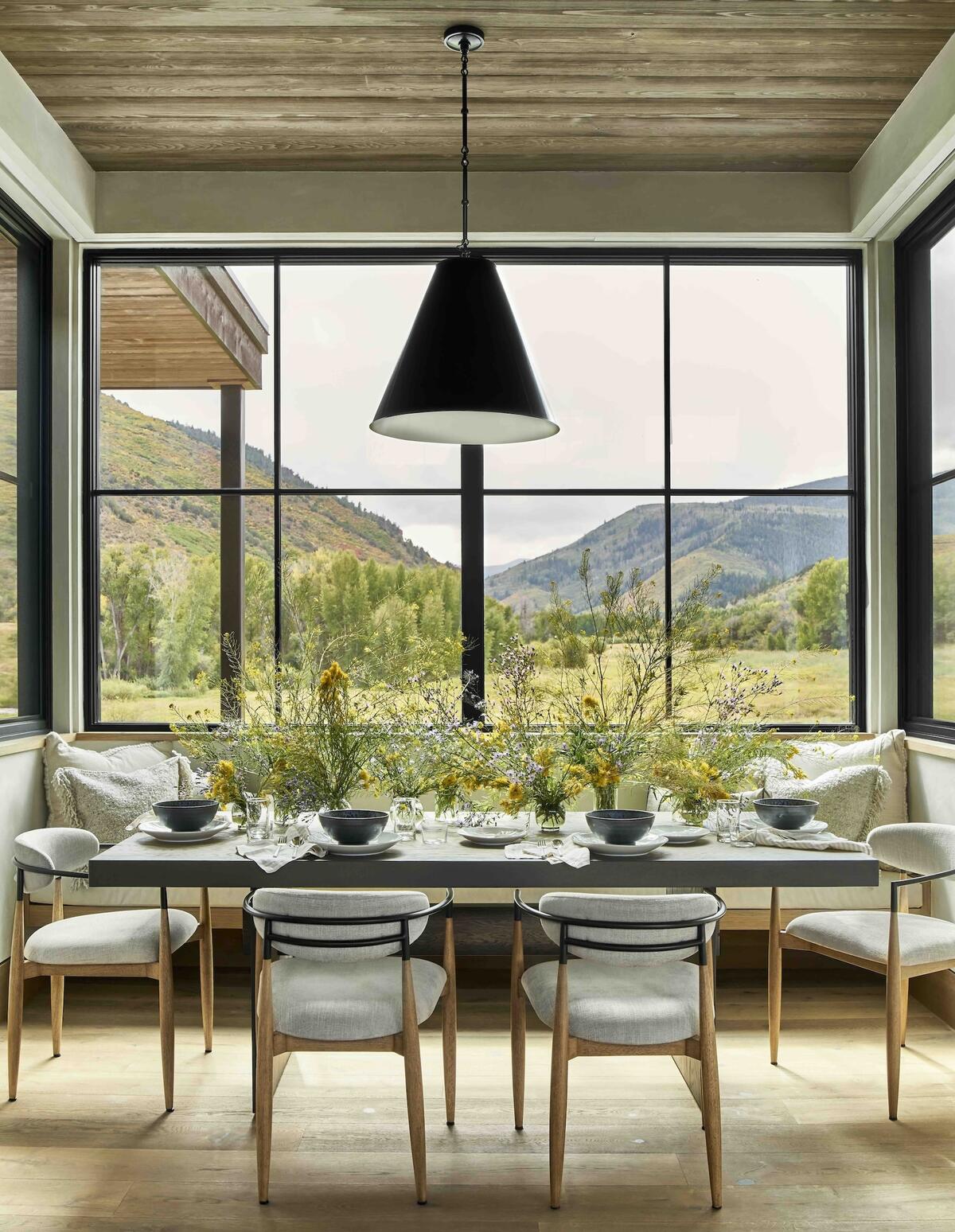
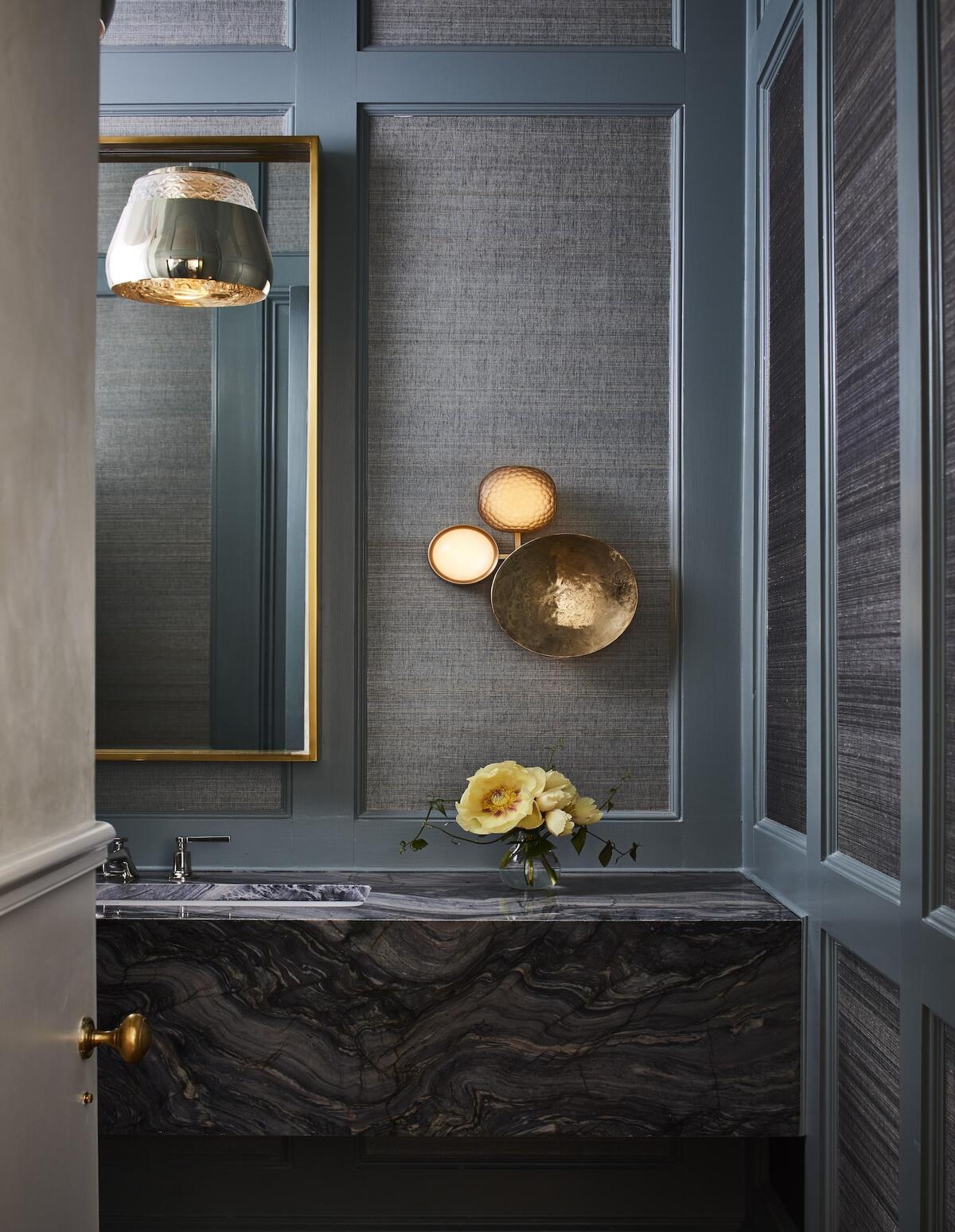
I want to go back to that idea of taking your time in David Easton’s office. Is that something you are even allowed to fold into your own business today? That approach seems so valuable, but it doesn’t fit neatly with how quickly the industry moves these days.
Yeah, my staff would laugh. But I would say yes and no. As a leader and as a business owner, I have gotten better with boundaries. In the beginning, you’re so excited that you say yes to everything, and then suddenly you’re running ragged, and you’re not doing the work you want to do. So I’ve really set my intentions.
I also came from a place where, unbeknownst to me, we always worked with renowned architects. That [level of experience] was just my expectation. When I first moved here, someone handed me a box drawn on a piece of paper, and I was like, “What is happening?” That was a big learning curve. And yes, we now have the capability to do interior elevations and full construction sets, but what I really love is collaborating with architects. When you have those two types of brains at the table, that is when you’re going to give your client the best product in the end, and those projects are also paced at a much better rate.
Something we’ve started doing internally is developing timelines that we issue to the client in our kickoff meetings. It’s like, “This is our expectation of this 18-month or two-year project. These are the key things that you’re going to see each month.” That might sound simple, but it has helped me stay on track, because I never want to be catching up. I want to be ahead to create that calm—for myself, but for my staff too.
How do you think about that growth and development piece for your employees?
I do all of my reviews on the same day, right before that yearly retreat. It gives me a sense of where they are right now, how they feel, and how they want to grow. Can the teams morph in order to give them more responsibility each year? This year, it was also about giving them autonomy. That’s why I decided to start showing the financials, and to say, “These are our goals. If we reach these goals, this is what can happen for the whole staff.” I don’t want to be shut off behind a closed door to them. It’s a small office, and I want to show them that there can be growth.
It’s also important that not only is there growth within our work, but it’s also growth personally. One of my team members is pregnant with her second, and we were here for her first. As a mom myself, I try to say, “Listen, if you need flexibility, we can work on that.” [We offer] paid maternity leave, as well—that’s really hard as a small business owner, but that’s what I stand for, and so I lead by example in that way.
Is growth of the team itself a goal?
I’ve really debated that. Looking back at the offices I worked in—I mean, Stephen’s office was about six people. What was interesting about working for David is that when I started, there were 40 people. Then the recession hit, and we went down to 12. Living in New York during that time impacted me. I wasn’t seeing the books or anything, but we definitely felt it. People got laid off. I was laid off at one point, and then they called me a few months later and were like, “Do you want to come back?” It taught me that even though we’re going to have some really good years, that doesn’t mean we should grow our staff to 40.
I really love the size of the team we have now. I’ve talked to a lot of people—not even just in interior design but in business in general—and [I’ve heard that] once you get over 12, you have to become more corporate. HR comes in, maybe an operations manager. Right now, I enjoy that I’m still very much a part of this team, and I’m able to do that with this number of people.
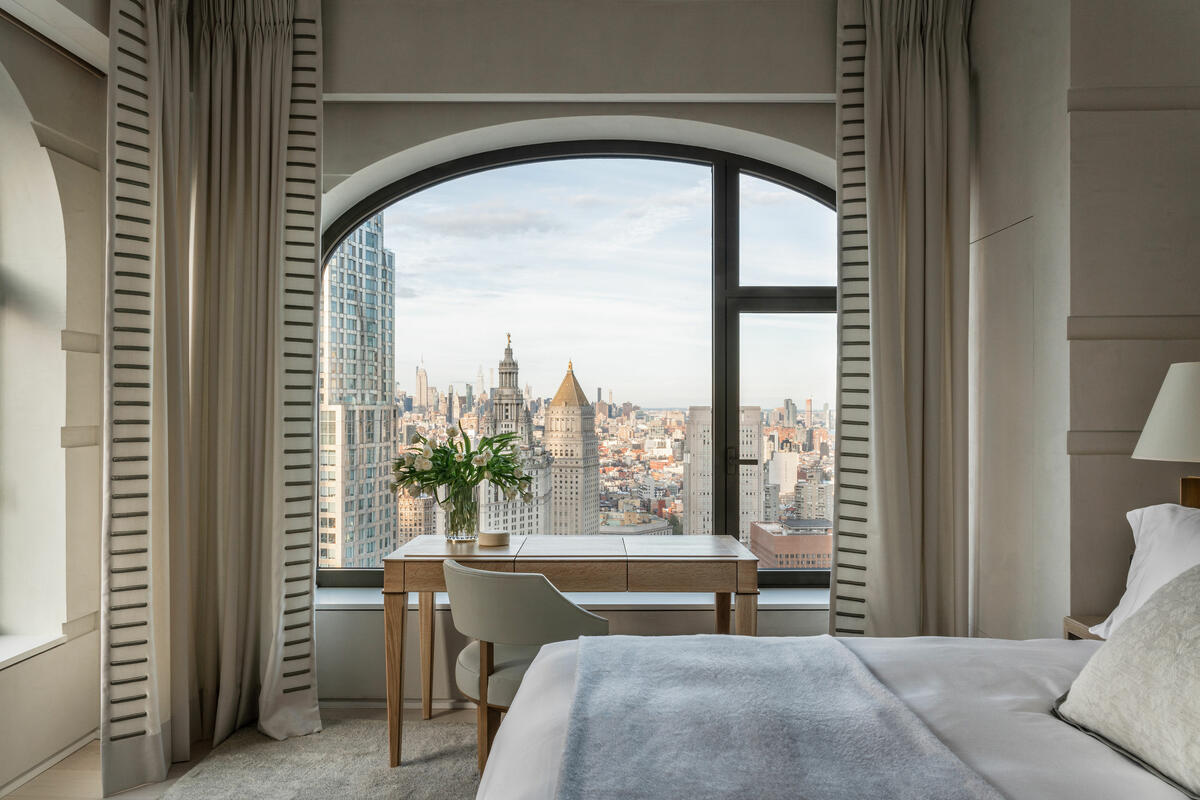
Can you tell me a little bit about settling into the Charleston design scene? How did that change the way you work?
In the offices I had come from, we made everything. All of my experience was drawing it and making it or buying it original. So there was a very large learning curve of moving here because—let’s be realistic—my projects were not going to be $40 million budgets, right? There are only a few places in the world where that exists. When I got here, I didn’t know where to buy an upholstered bed. I remember my mom asking me where to get one, and I was like, “I don’t know.”
Now, putting together my projects is more like a puzzle—[a mix of] figuring out where to keep the things that I really believe should be made custom and pulling retail. I’ve shown my clients: This is my upholsterer’s cost to make this sofa. This is the cost of fabric. And now I’m going to compare it to [a retail store], and it’s the same. The difference is that when we make it with this workroom, you can go sit on it in muslin and you can tell them if the pitch is correct. Is it soft? Do you want it firmer? There is an advantage to that. Some projects have bigger budgets and more creativity, but other projects are more realistic. I might find a bench on McGee & Co. and re-cover it, and that would be less expensive than making it. But even for those projects, I’ll tell the clients, “I think we should make this sofa.”
What’s really different here in Charleston is that, in the homes we’re working in, scale is so critical. These homes are hundreds of years old, and the rooms are broken up—they were not built for giant sectional sofas. We recently did a project with clients who were very budget-driven, and I said, “Anything that you’re going to purchase from these retailers will be way too deep for this room. You won’t be able to have a coffee table.” But we do projects all over, so sometimes I get to go to Colorado and buy giant sofas, and that’s fun too.
I know you’re in the process of relaunching your website. Can you tell me how you’re thinking about your digital footprint in general?
I realize that Instagram is important, but I’m not very good at marketing myself. I’m like, “Nobody cares, right?” But what I’ve learned is that people are interested—what we do is interesting, people want to see that, and this is what I need to do for my business. When I shifted it in my head from “social media” to “marketing,” it made the investment in that seem more important.
It’s the same for any industry—my husband is a chef, and there are some people in that world who are not that great, but they’re extremely good at marketing. At the same time, no matter how talented you are, if you sit in a corner and no one knows, then what’s going to happen? That was my realization: This is something that I definitely have to spend time on and that I have to invest in for my business to grow.
I’m currently interviewing someone to do my Instagram. I was working with a third party for a while, and it felt—I want to use a better word, but it was boring. It was flat. It was pretty, but it felt pretty corporate. That’s not who I am, and that’s not how my firm is. Your website is one thing, right? You go for the information. But I think Instagram provides a feeling. Recently, I started to realize that it needed to be more of my voice and our energy. That said, I still believe in hiring a third party for the analytics—for all the things that I do not understand. I expect people to hire me for what I do based on my experience, and I feel the same way about other trades.

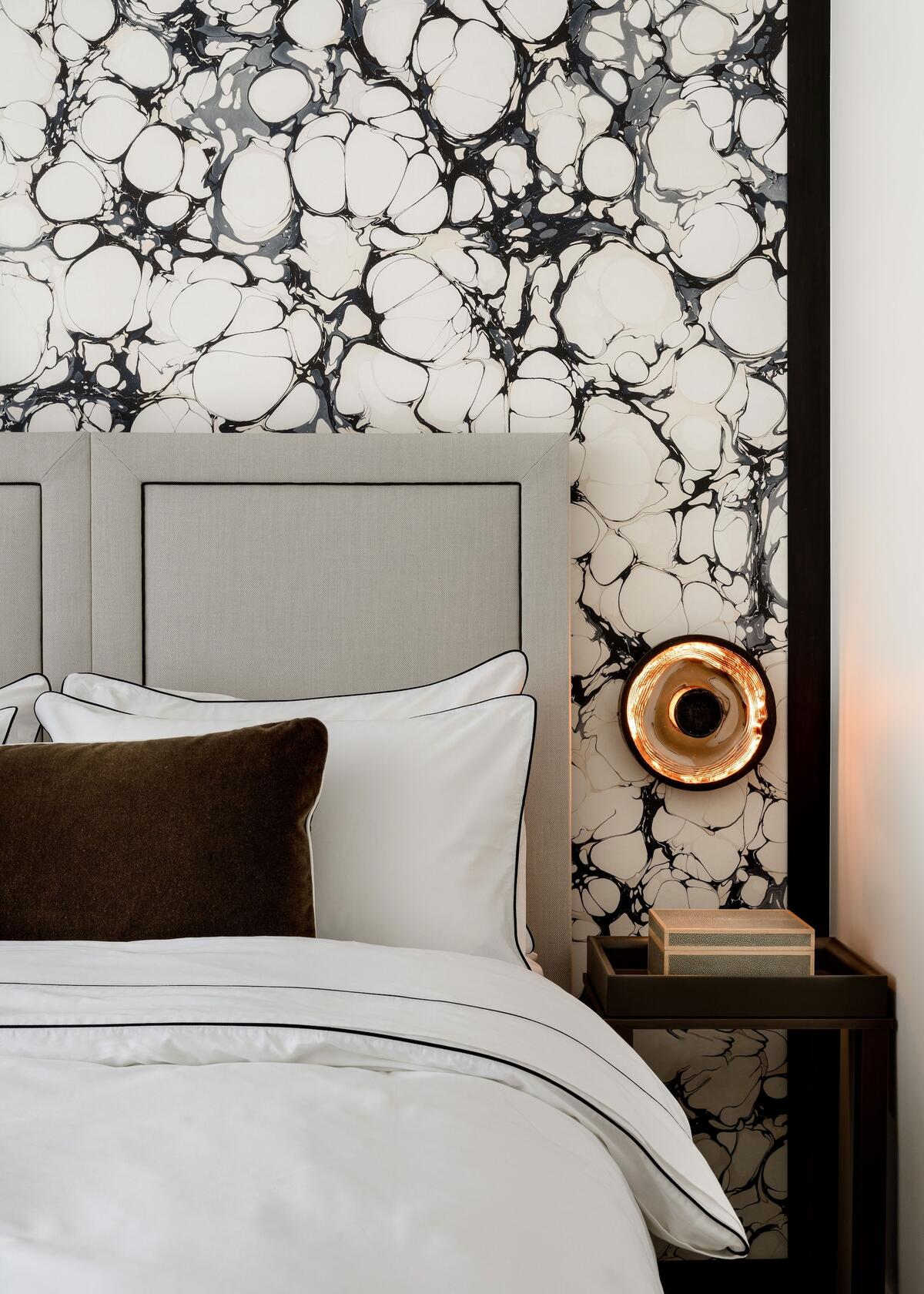
How have you approached billing for your work?
When I’m interviewing clients in the beginning, I say, “Listen, we are very transparent. You will see every dollar.” In our budgets, we list the item’s cost and the markup. We provide estimated pricing for accessories, lampshades—everything that is going to be in their house will be listed so they have an understanding to [base their] decisions on. When I do my big initial presentation to clients, which is about 80 percent of the project, we give them a budget that includes everything I’ve chosen, and there’s a line item for anything that I haven’t chosen yet. We do that because I tell them, “Your decisions can be monetary or they can be aesthetic, and you have every right to choose however you’d like.”
In terms of billing, I’m proud of how we’ve streamlined everything. Our business is unique in that the number of transactions happening each month can be very high. If there’s a little bit off—$15 here, $5 there—you could [very quickly] be $20,000 off. I have a whole process, but my team was laughing at me, because I still use binders. That’s where we have our proposals, our purchase orders, all of our quotes, all of our acknowledgments. I taught my staff how I learned. But we had a big debate this year at the retreat: Can we go digital? And I said, “I’m just not ready. Can you just let me keep my binders one more year?”
The countdown is on.
It is! We’ll see if it happens. But when we build our packages, you could have 40 different proposals and invoices for the entire house—which I think is a lot. And again, thinking about the client experience, it’s a stressful thing to be building or renovating a house, and you just don’t want bills all the time. So I try to say, “You’re going to get four big packages, and that’s your entire house. This is when you’re going to get them.” We talk about that a lot with our clients in meetings—we’ll say, “Now we’re working up to this next package, which will have all the drapery and bedding. This is what we think it’s going to be.” That way, it’s not a shock. It helps them, but it also helps us. Yes, we’re doing all these transactions, but if we know we’re coming up to this big round of purchasing, you can schedule that into the life of the office.
How do you organize your fees?
We’re hourly now. I used to say to clients, “What would you prefer?” because some people really want to know what they’re paying each month. But to be honest, when I looked back at our time, we were losing so much money [with a flat fee], and that was a hard pill to swallow. It was also a great lesson as a business owner. And you know what? Work is work. You see what we’re doing every month, and we bill you for it. So it’s hourly, and then we charge a markup.
Now, when clients ask me questions, it’s like, “Based on the scale of your house and your estimated budget, we know that it’ll be about this much a month throughout the life of your project for your team to work on this.” We’ve had clients say, “OK, I want to spend $1.2 million. Is that possible?” I’ll go backwards from that and say, “This is what you’d pay in fees, this is your tax, this is your shipping”—because we estimate all of that in our budgets as percentages—and then I can tell them yes or no, rather than just saying yes and hoping for the best.
What does success look like for you?
Being able to have balance.
Is that possible? Is that real?
No, but I think creating a space for my staff and myself to say, “I’m going to take a week off and I’m going to go travel with my family,” or “I’m going to go somewhere I’ve always wanted to go,” and to be able to come back to an office that is happy and healthy and working—that, and my family is happy. But I don’t think all these things happen at the same time every day.
The goal is you can create these big moments and still have the engine running, and then return to the engine and still enjoy that. That, to me, is a huge part of the success. The other part, from an artistic and creative standpoint, is to be able to work with the architects that I respect and love, and on projects that I respect and love—to still get that Christmas-morning feeling when you get a new project.
To learn more about Betsy Berry, visit her website or find her on Instagram.





























